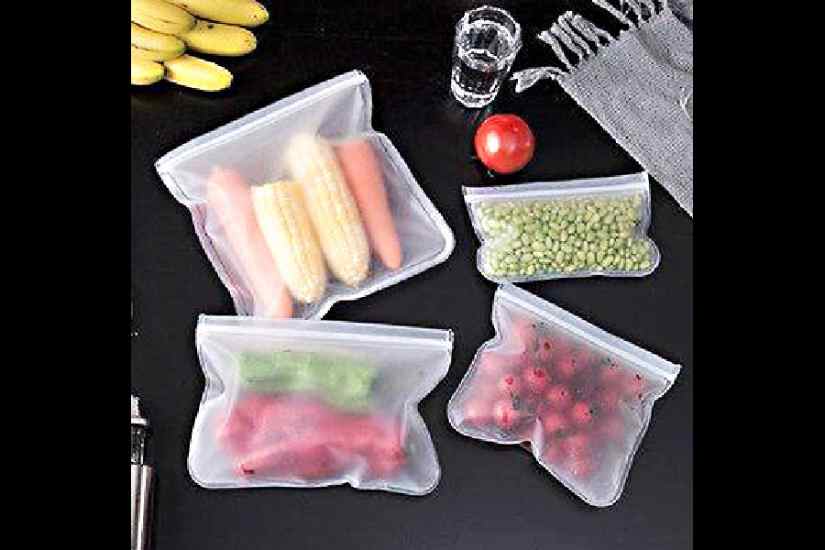TECH ON MY PLATE!
2023 is almost nearing an end and the buzzword on everyone's lips is AI — artificial intelligence. With the global population surging, the demand for food is skyrocketing. This has sparked a keen interest in leveraging technology to revolutionise how we produce, distribute, and enjoy our meals. From sustainable agriculture to precision farming, from artificial intelligence to ingenious packaging, the food industry is undergoing a transformation that was once deemed impossible.
How we buy our food!
In the realm of today's tech-driven world, imagine this: the ingredients for that mouthwatering dinner you've been craving are just a few clicks away. It's the magic of online grocery shopping and delivery, rewriting the script not only for how we shop, but for how we curate our kitchens. In the hustle and bustle of life, time has become a cherished currency. So, it's no wonder many of us have wholeheartedly embraced the convenience of ordering groceries from the cosy confines of our homes. Fueled by the whirlwind that was the Covid-19 pandemic, what started as a mere convenience has now blossomed into a steadfast lifestyle choice, reshaping how we embark on our culinary adventures.
Yet, this culinary revolution, driven by technology, is more than just a digital shopping spree. It's a spirited drive towards making healthier, sustainable food options an open highway for all. Leading this charge are mobile apps, not just identifying but facilitating the purchase of organic or locally sourced foods. This shift isn't merely a tilt towards mindful eating; it's a resounding commitment to shrink the ecological footprint of the food industry. It's about aligning our dietary choices with our environmental ethos. In an age where every meal can be a mindful choice, technology gracefully steps in as the bridge between our plates and the planet's well-being. It's not just about what's on our plate, it's about the positive ripple effect we create with every bite.
How we grow our food!
Beneath the sun-soaked fields and amidst the rustling leaves, a quiet revolution is underway, led by none other than technology itself. Precision agriculture, a marvel of modern ingenuity, is reshaping the very essence of farming. It's not just about tilling soil and sowing seeds, it's about cultivating crops with newfound finesse, balancing efficiency with an unyielding commitment to sustainability. The future of farming doesn't merely measure its worth in bushels; it's about crafting a legacy of quality and green stewardship.
And let's not stop there, for technology is a maestro conducting an orchestra of innovation in our very kitchens. Enter the realm of protein powders derived from humble algae, where every scoop is a nod to a planet-friendly alternative. But here's the real showstopper — 3D printing for food. It's not the stuff of sci-fi dreams; it's a bona fide, palate-pleasing reality.
3D food printing is a cutting-edge technology that creates edible objects or entire dishes by depositing edible materials layer by layer, similar to traditional 3D printing. It starts with a digital design of the food item, and the printer interprets this design, depositing food-grade ingredients accordingly. This technology allows for highly customised dishes, intricate designs, and innovative textures and flavours. It also has the potential to revolutionise food accessibility, particularly for those with special dietary needs. While still in its early stages, 3D food printing holds immense promise for the culinary world as it continues to evolve.
This revolutionary leap isn't just about what's on your plate; it's about tailoring your meals to meet your unique nutrition needs, while waving a cheerful goodbye to allergens.
So, as you reach for that hearty dish, know that it's not just a meal; it's a testament to the marriage of tradition and technology, crafting a future where every bite leaves a legacy of sustainability and flavour.
How we prepare our food:
In the kitchen's grand show, technology isn't just a spectator — it's a star player. Smart kitchens mark a new era, where gadgets aren't just tools, they're kitchen confidantes, armed with AI wizardry and automation precision. They're here to lend a hand, not take over the show. They tackle the nitty-gritty, from precise measurements to relentless stirring and blending, giving the chef the space to compose their culinary symphony.
AI-powered kitchen gadgets are the culinary wizards of the digital age. These ingenious devices seamlessly integrate artificial intelligence into our cooking routines, turning our kitchens into smart, intuitive spaces. From precision cooking to personalised recipe suggestions, they're the sous-chefs we never knew we needed.
Picture a countertop companion that not only times your roast to perfection but also offers creative twists on classic recipes based on your taste preferences. These gadgets are more than mere appliances; they're culinary companions, taking the guesswork out of cooking and adding a dash of innovation to every dish. With AI at the helm, these kitchen marvels are ushering in a new era of culinary convenience and creativity.
Yet, in this dance of progress, a hushed worry murmurs in the background. It hints at fading traditions and skills handed down through generations. It begs the question: can we embrace innovation without bidding adieu to our culinary heritage? It's a tightrope walk, a balancing act where tradition waltzes with innovation. This is no clash, but a collaboration, promising to elevate our culinary experiences while keeping the soul of our culinary art intact.
How our food is sold:
In the ever-evolving landscape of food, technology isn't only altering the way we cook and consume but also how products reach our plates. The advent of social media platforms and the rise of influencers have forged a powerful connection between creators and consumers. This dynamic duo wields a considerable influence, shaping the tastes and preferences of a vast audience. This shift in consumer behaviour has ignited a surge of interest in ethical and sustainable food choices. People are increasingly attuned to the far-reaching impacts of their dietary decisions, both on the environment and society at large.
Now, let's take a fascinating foray into the realm of lab-grown meat, a true vanguard in food technology. It's more than just a sustainable alternative; it's a paradigm shift in our perception of protein. Lab-grown meat requires significantly less land and water compared to traditional farming methods, aligning perfectly with our collective aspiration for a more ecologically balanced planet. What's more, companies are orchestrating a symphony of food distribution, ensuring that supply seamlessly harmonises with demand, all thanks to real-time tracking technology. And if that isn't impressive enough, there's a burgeoning movement to upcycle and repurpose food, ensuring it avoids the fate of landfills, contributing to a more sustainable food ecosystem. This is the future of food — a realm where innovation and conscientiousness intersect, promising a brighter and more sustainable culinary horizon.
IT'S ALL ABOUT YOU:
Picture this: it's not your grandma's kitchen anymore; it's a high-tech lab where chefs and food scientists are whipping up culinary magic. Molecular gastronomy is the name of the game, and it's like a chemistry experiment meets a cooking show. Think of it as a culinary adventure where textures, flavours, and presentations are like a rollercoaster for your taste buds. They're turning liquids into spheres, creating foamy masterpieces, and making ingredients that shouldn't go together, well, get along just fine.
In this culinary universe, apps like Swiggy and Zomato are like matchmakers, connecting you with a galaxy of dining options, from your neighbourhood mom-and-pop shop to the fancy-pants gourmet spot. Food delivery isn't just about getting grub; it's about having a world of flavours delivered right to your doorstep.
But here's the kicker — it's all about you. Imagine walking into a restaurant, and instead of a generic menu, you get personalised food recommendations. It's like having your own food genie, making dining an experience tailored just for you. This is the future of eating — where technology teams up with culinary creativity to serve up meals that are not only tasty but as unique as your own fingerprint, leaving you with dining memories that are out of this world.
Is it all rosy? Or are there some thorns too?
In this brave new world of food tech, we're not just talking futuristic fridges that order your groceries. We're diving deep into the heart of agriculture, where machines have traded overalls for microchips, working the fields faster than a New York minute. Robots are clocking in, replacing human hands in farms, factories, and even our favourite diners. It's like the Wild West out there, but instead of cowboys, it's robots calling the shots. Sure, it beefs up safety and efficiency, but folks are wondering about jobs. It's a fine line we're treading, between technology's promise and the folks who keep the wheels turning. We need a harmony between the old and the new, like a symphony where violins and synthesisers play in perfect rhythm.
From seeds in the ground to plates on the table, innovation's steering the ship. It's a food revolution, and tech's the engine propelling us forward. So, saddle up, because we're headed for a future where every meal's an adventure, and every bite's a revelation. It's a world where convenience, sustainability, and taste are in a three-way tango, waltzing across our taste buds. Raise a toast to a tomorrow where the culinary horizon stretches as far as our appetites can see!
Technology with food recipes:

1. Dehydrated oranges
l Sliced Oranges. Take one orange and with the help of a mandolin, finely slice it.
l The thin slices you make will help the oranges to fry up faster.
l Arrange orange slices on a dehydrator machine leaving room for air circulation.
l Set the dehydrator to 135 degrees. Start checking the orange slices after 2 hours.
l Sometimes it takes 7-10 hours for the ingredient to completely dry up.
l Once they are completely dried up with no moisture remaining, store in a jar.
2. Sous vide technique

I We will do sous vide without the fancy equipment; we would just need a digital thermometer and some zip-lock plastic bags.
l The first step is to prepare a water bath and fill the pot (not full).
l Next is to clamp a digital thermometer to the side of the pot.
l Start heating the water till the desired temperature.
l Add food. For instance, baby carrots in a zip-lock bag, along with butter, oil, herbs, salt, and pepper.
l Place the bag in the water with the top open, so that the air escapes the bag. Hang the top of the bag over the edge of the pot and clip it into place with a clothespin.
l We can pan-sear the carrots to give the final touch. Heat a large pan until it’s super hot, then remove the carrots from the bag with tongs and sear for a few seconds on each side. Add butter or aromatics to the pan as desired. Serve warm!
I’m all for sustainable technology. What are your thoughts? I would love to hear from you at vidisha@paprika.net.in
Vidisha Bathwal is the founder of Paprika Gourmet, an exotic artisan catering service brand in Calcutta. She’s also a passionate foodie and a fitness enthusiast
